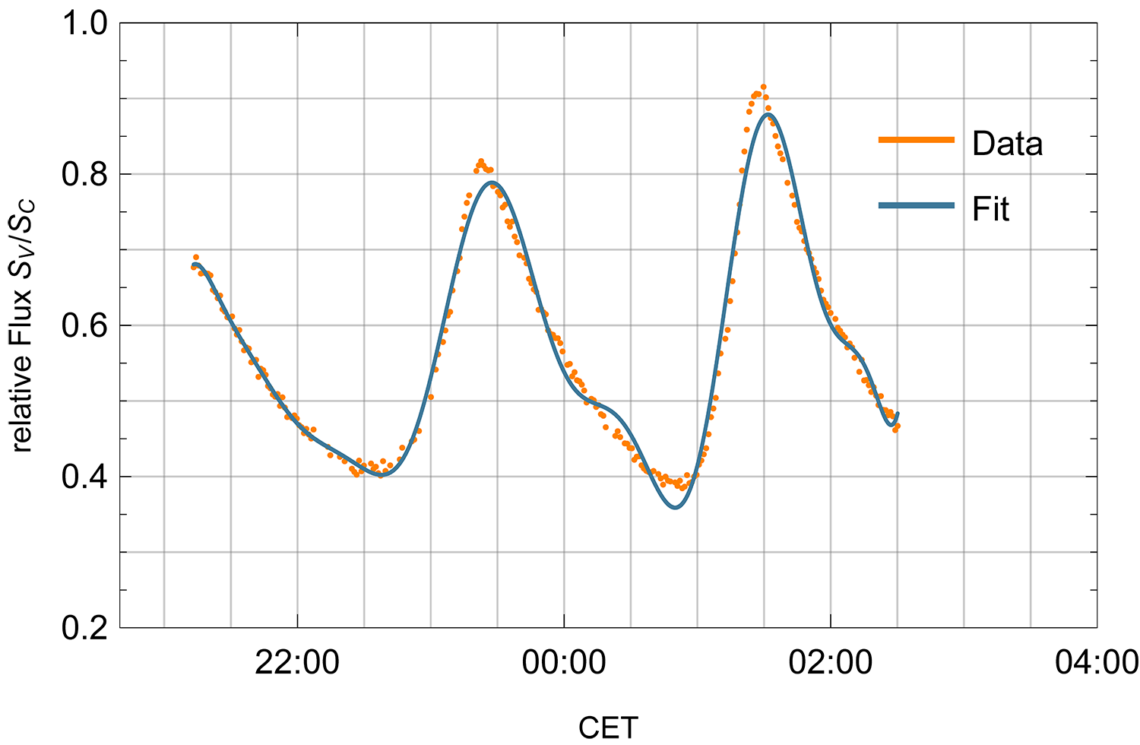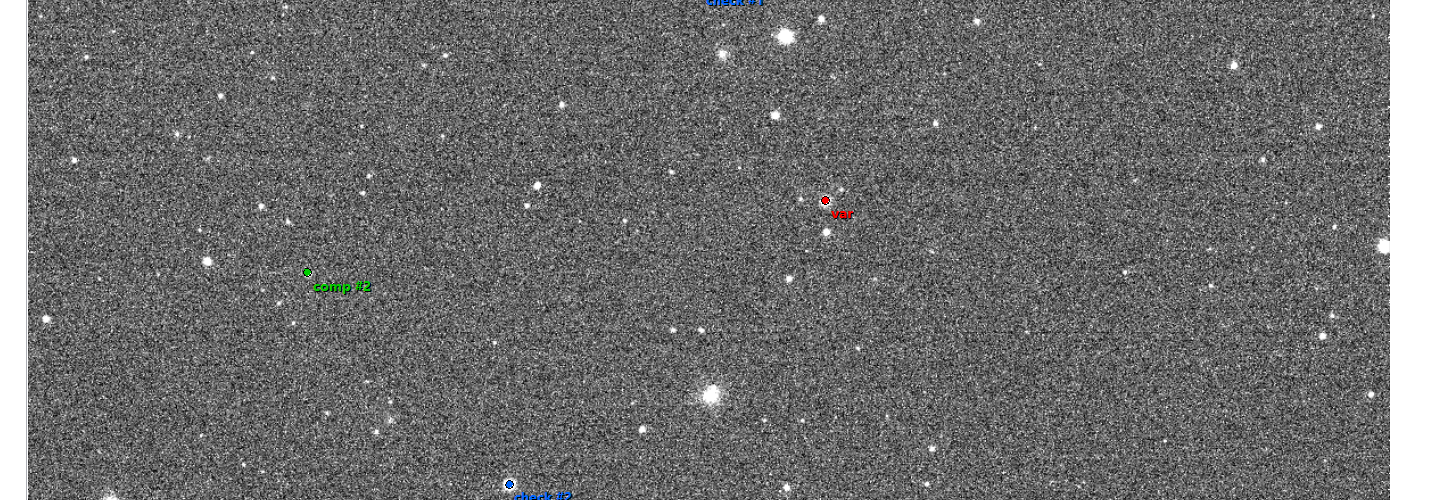
Patrick Falk & Clemens Nickel
During the photometry experiment we could observe the brightness variation caused by the exoplanet CoRoT-18b and the variable star RV Ari of the Aries-constellation in the night of the 9th and 10th of November 2020. We were also given the data of another exoplanet Qatar-4b which was analyzed as well.
RV Ari is a variable star which means that it changes its brightness at a certain period. This variation is comparable to a partial eclipse where the moon blocks a part of the sun light. For RV Ari, however, that’s no moon, it’s a δ-Scuti variable. That means it changes its radius due to the radiation energy getting stuck and released periodically within the star.
The picture above shows a raw image of the observation with only the positions of our desired object and some check and comparison stars being added. Those additional stars are important as the underlying method is the differential photometry. Therefore, their and RV Ari’s brightness were related.
After convincing Mathematica of how to understand the input data generated with Muniwin, the light curve on the right-hand side could be created. It shows this periodic behaviour and enabled further analysis. The period could be obtained by the displayed Fourier-Fit and arose to a time of 2h 23 min 28 s, which matched the data of a star catalogue pretty well.
We were also able to find another variable star in our CoRoT-18b data which later was identified as a W Ursae Majoris type variable. Those are binary stars which are so close that they touch each other, therefore forming a common envelope. As they periodically cover one another, the brightness of the system is varying continuously.
It’s really overwhelming to imagine these situations of star sized objects either changing their sizes significantly by only two and a half hours permanently or even being in direct contact with each other. In this way, the experiment reminded us of how mind-blowing our universe is and how much more is still out there to discover.

